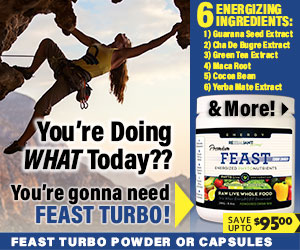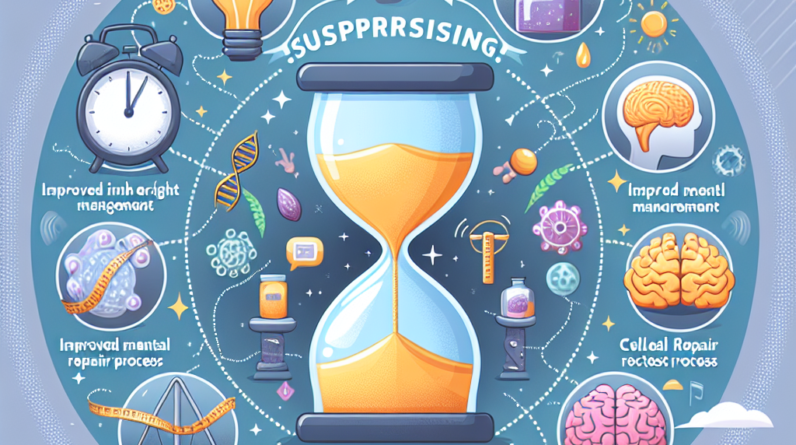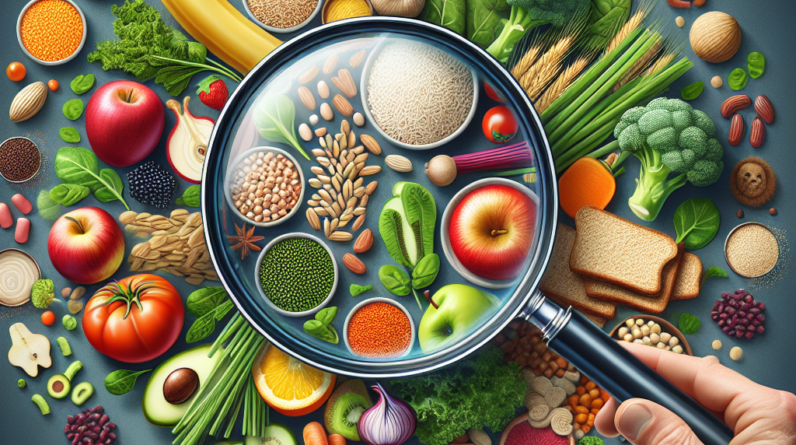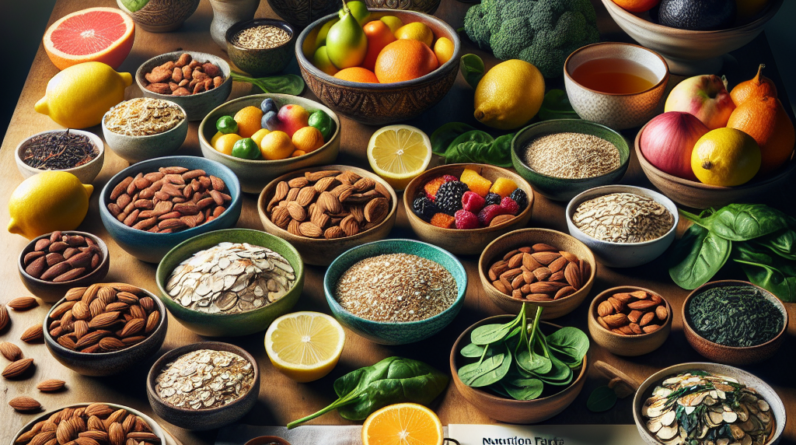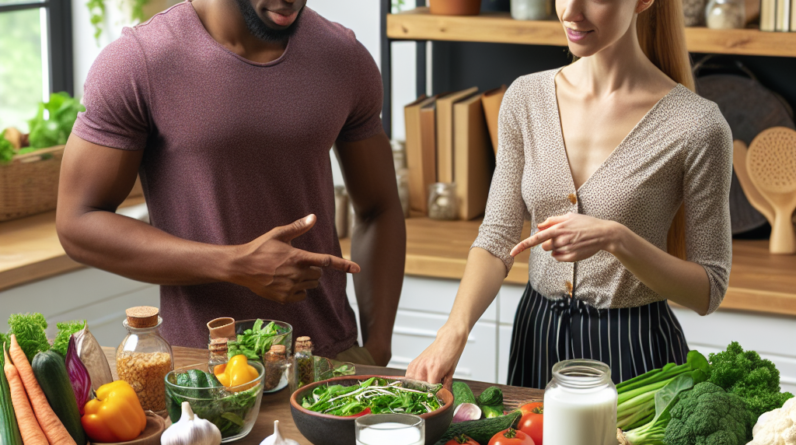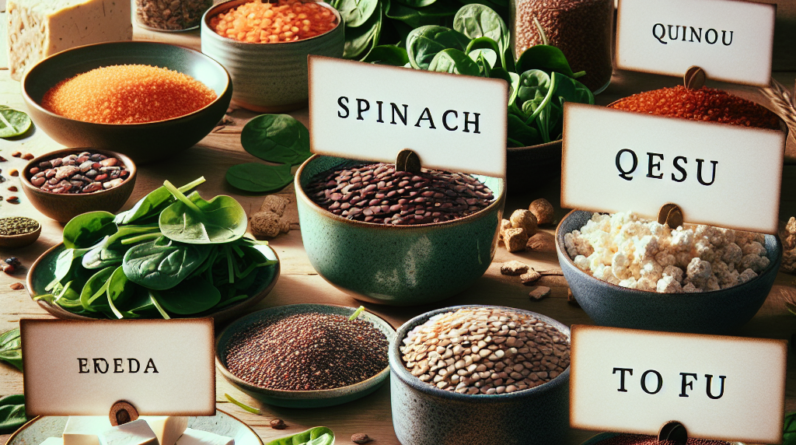
Legumes
Why Legumes Are Essential
First off, let’s talk about legumes. I can’t tell you how many times I’ve included lentils, chickpeas, and black beans in my meals. They are absolutely packed with iron! Not only do they provide a solid amount of iron, but they’re also rich in protein and fiber, making them an all-around great choice for a healthy diet.
Get a Huge Discount and Bonus! Try for 90 Days Risk Free
When I eat a hearty bowl of chili loaded with beans or a warm lentil salad, I not only feel full, but I also know I’m doing my body a favor. These legumes can be added to soups, stews, salads, and even made into spreads like hummus. It’s like a culinary dream come true, combining flavor and nutrition!
Plus, they’re super versatile! Whether you’re vegan, vegetarian, or just looking for a meatless meal for a night, legumes can be a solid foundation. They’re not only budget-friendly but also easy on the stomach, making them a fantastic go-to source of iron.
Cooking Tips for Legumes
Cooking legumes might seem daunting, but trust me, it’s easier than you think! I’ve found that soaking dry beans overnight really makes a difference when it comes to cooking time. It’s like giving them a little head start. Just toss them in a bowl of water and let them hang out while you sleep!
And if you’re short on time, canned legumes are a lifesaver. Just rinse them to remove excess sodium and you’re ready to go. I often throw a can of chickpeas into my salad for some extra crunch and nutrition.
Experimenting with spices can totally elevate your legume game. Add some cumin, garlic, or even a dash of cayenne for kick—trust me, your taste buds will thank you. Plus, it’s a simple way to change up your meals without much effort!
Combining Legumes with Vitamin C
Alright, so here’s a little tip I picked up along the way: if you want to maximize iron absorption from legumes, pair them with foods high in vitamin C. Think tomatoes, bell peppers, and oranges. I love adding some fresh tomatoes to my bean salads!
This combo helps your body absorb iron more effectively. It’s like they’re best buddies helping each other out in the nutritional world! So next time you’re whipping up a dish, consider adding a splash of citrus or some colorful bell peppers.
Not only does this make for a healthier meal, but the flavors work really well together. A pop of freshness from the vitamin C-packed veggies makes the iron-rich legumes even more delightful.
Get a Huge Discount and Bonus! Try for 90 Days Risk Free
Leafy Greens
The Power of Leafy Greens
I can’t stress enough how amazing leafy greens are when it comes to getting your iron fix. Spinach, kale, Swiss chard—you name it! These greens provide a healthy dose of iron along with a plethora of vitamins and minerals. They really pack a punch!
Adding greens to dishes is straightforward; you can toss them into smoothies, sauté them as a side, or mix them into soups. I love folding some fresh spinach into my omelets or pastas. It’s such an easy way to amp up the nutrition without compromising on the taste.
One of my go-to recipes is a kale salad tossed with a zesty vinaigrette. It’s refreshing, satisfying, and of course, iron-rich! Who knew that something so simple could contribute to a balanced diet?
Cooking and Preparing Leafy Greens
When it comes to cooking greens, a little goes a long way. I’ve learned that overcooking can cause some of their nutrients to diminish, so it’s best to keep it quick. A light sauté or steaming will keep them vibrant and packed with nutrients.
Need a Serious Energy BOOST? Huge Discount Try for 90 Days Risk Free
Also, kale can be tough if eaten raw, so massaging it for a minute can really make a difference in texture. Just drizzle a little olive oil and lemon juice and get in there with your hands. It’s oddly therapeutic!
For me, greens are super versatile. They can be added to almost anything—wraps, smoothies, and even as pizza toppings! It’s like a secret weapon in my kitchen arsenal that adds a nutrient boost to any meal.
Enhancing Iron Absorption
Just like with legumes, combining leafy greens with vitamin C is a magical formula for better iron absorption. I remember the first time I had spinach with strawberries in a salad; it was delicious and I felt like I was doing something great for my health!
When you eat these together, the vitamin C from the strawberries helps your body absorb the iron from the spinach more efficiently. It’s like the perfect duo, making your meal not only tastier but also more nutritious.
So next time you’re whipping up a salad, consider adding some slices of citrus or strawberries. Not only do they taste great together, but you’ll be maximizing the benefits of both the greens and the fruits!
Nuts and Seeds
The Nutty Truth About Iron
When I think about snacks, nuts and seeds always come to mind. They’re such a fantastic source of iron, especially pumpkin seeds, cashews, and hemp seeds. I often sprinkle them on my salads or blend them into smoothies for that extra iron boost!
What I love about nuts and seeds is their crunchy texture and the healthy fats they provide. They keep me satisfied and make for a convenient, on-the-go snack. Just grab a handful, and you’re good to go! Who doesn’t love an easy snack, right?
Not only do they taste great, but they also offer a variety of other health benefits. From heart health to supporting brain function, nuts and seeds really deserve a spot in everyone’s diet. It’s one of those things I never skip when grocery shopping!
Incorporating Nuts and Seeds
Incorporating nuts and seeds into your diet can be as simple as tossing them into salads, oatmeal, or even yogurt. I often blend some nut butter into my smoothies for a creamy texture and flavor bomb. It not only boosts the taste but also ups my iron intake.
For a quick snack, I love making my own trail mix. Just grab a mix of nuts, seeds, and some dried fruit; it’s the ultimate energy booster! You can easily customize it with your favorite combinations, making it a fun and healthy treat.
And don’t forget about nut-based milks! Almond milk and cashew cream can enrich a variety of dishes while providing different flavors and nutrients. Finding ways to sneak in some nuts and seeds into daily meals can be both enjoyable and beneficial!
Mind the Balance
While nuts and seeds are fantastic sources of iron, it’s essential to remember the importance of moderation due to their calorie density. It’s easy to overdo it, especially when they taste so good! I’ve had my fair share of eating an entire bag of nuts in one sitting, and let me tell you, my stomach didn’t appreciate it.
Good Health Solution is Easier Than Most People Think!
Take a Look for Yourself!
So, I always make it a point to measure out portions and enjoy them mindfully. Even a small handful can provide a great boost of iron without going overboard. Balance is key, after all.
When enjoyed wisely, the nutritional benefits of nuts and seeds can shine without weighing down your calorie count. They’re definitely a delicious addition to any healthy eating routine!
Whole Grains
The Iron-Rich Benefits of Whole Grains
Whole grains are often overlooked, but they pack a serious nutritious punch! Quinoa, brown rice, and oats are just a few examples of grains rich in iron. I find that switching to whole grains makes a noticeable difference in how I feel throughout the day.
Not only do they provide iron, but they’re also a great source of fiber, keeping things moving along nicely. I love making a big batch of quinoa at the start of the week; it’s easy to toss into salads or serve as a side dish.
Whole grains also have that wonderful ability to make meals filling without weighing me down. It’s like getting all the goodness without feeling sluggish. Seriously, if you haven’t tried simple swaps for whole grains yet, you’re missing out!
How to Enjoy Whole Grains
I’m all about breakfast, so starting my day with whole grains is a must. Whether it’s oatmeal topped with fruits or whole grain toast with avocado, it’s always delicious. I’ve even snuck quinoa into my breakfast bowls with some fruit and nuts; it’s a game-changer!
Also, switching out refined grains for whole options in recipes is super simple. I love using brown rice in stir-fries and quinoa in salads. Whole grain pasta has become a staple in my pantry, too—it’s a fantastic way to boost my iron levels!
Plus, whole grain cereals can be a wonderful breakfast option. Just check the labels for those that are high in fiber and lower in added sugars. Trust me, your body will thank you for the fiber kick along with a healthy dose of iron!
Pairing Whole Grains for Maximum Iron
When combining whole grains with other iron-rich foods, you’re setting yourself up for success. For instance, I love making a quinoa salad with black beans and veggies; the iron content soars when you combine those elements!
It’s also helpful to consume them alongside vitamin C-rich foods. Having my quinoa bowl with a side of orange slices or a tomato salad is a routine for me. This way, I’m loading up on iron while ensuring my body can absorb it efficiently.
Simply put, by being mindful of how I assemble my meals, I can maximize the iron intake while enjoying delicious dishes. And who wouldn’t want to do that?
Dried Fruits
The Sweet Deal of Dried Fruits
Last but not least, let’s dive into dried fruits! They can be a great addition to any meal or snack as they’re surprisingly high in iron. Apricots, figs, and raisins are among my favorites. Just a handful can give you a nice boost of iron on the go!
Dried fruits also bring their own unique flavors and textures, which makes snacking enjoyable. I like throwing a few into my morning oatmeal or granola; it adds not only sweetness but also that nutritional value.
Moreover, they can satisfy a sweet tooth without totally derailing healthy eating habits. I find that they’re a fantastic natural candy with benefits—it’s a win-win!
How to Incorporate Dried Fruits
The options for incorporating dried fruits are endless! I often use them in baking, mixing them into muffins or energy bars for added flavor and nutrition. If you’re looking to jazz up your salads, toss in some raisins or dried cranberries for a delightful twist.
You can even pair them with nuts for a perfect trail mix. It makes for an easy snack option that’s great for when I’m on the go. Just mix your favorites, and you’re set!
If you want to get creative, try making your own fruit leather at home using pureed dried fruits. It’s a fun and surprisingly simple project, and the result is a delicious treat you can enjoy anytime!
Storing Dried Fruits Properly
One tip I’ve found helpful is storing dried fruits properly to maintain their freshness. Keeping them in an airtight container in a cool, dark spot works wonders. I usually go through them quickly, but if you have leftovers, it’s the best way to preserve their flavor.
Remember to watch out for added sugars and preservatives when buying dried fruits, as they can sneak in sometimes. I prefer the ones with no added ingredients—just pure fruit goodness!
Overall, incorporating dried fruits into your diet is an easy way to not only satisfy cravings but also enhance your iron intake. They truly add versatility to meals and snacks alike!
FAQs
1. What are the best plant-based sources of iron?
The best plant-based sources of iron include legumes, leafy greens, nuts and seeds, whole grains, and dried fruits.
2. How can I improve iron absorption from plant sources?
Pair iron-rich foods with vitamin C sources, such as citrus fruits, bell peppers, or broccoli, which significantly enhances iron absorption.
3. Are there any drawbacks to a plant-based iron diet?
Some plant sources contain non-heme iron, which is less readily absorbed than heme iron from animal products. Therefore, it’s important to combine iron-rich foods effectively.
4. Can I meet my daily iron needs through a plant-based diet?
Yes, with careful planning and the right combinations of foods, it’s entirely possible to meet your daily iron needs through a plant-based diet!
5. What are some easy ways to incorporate more iron into my meals?
Incorporate legumes into salads or soups, add nuts and seeds to snacks, choose whole grains over refined ones, and mix in dried fruits for added flavor and nutrition.


